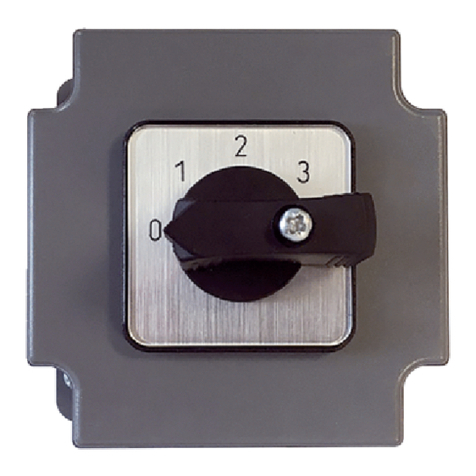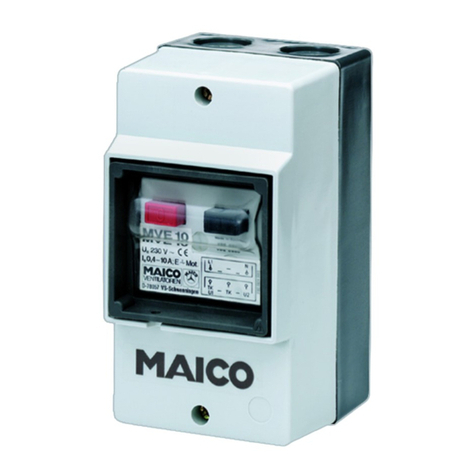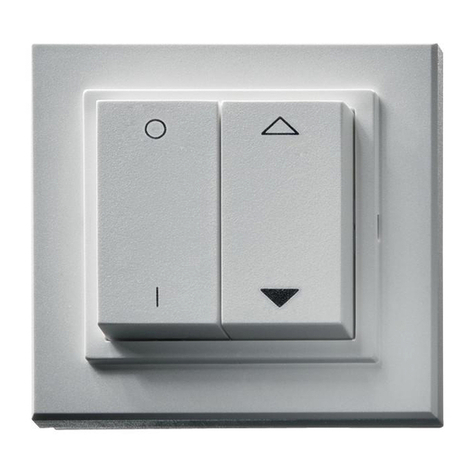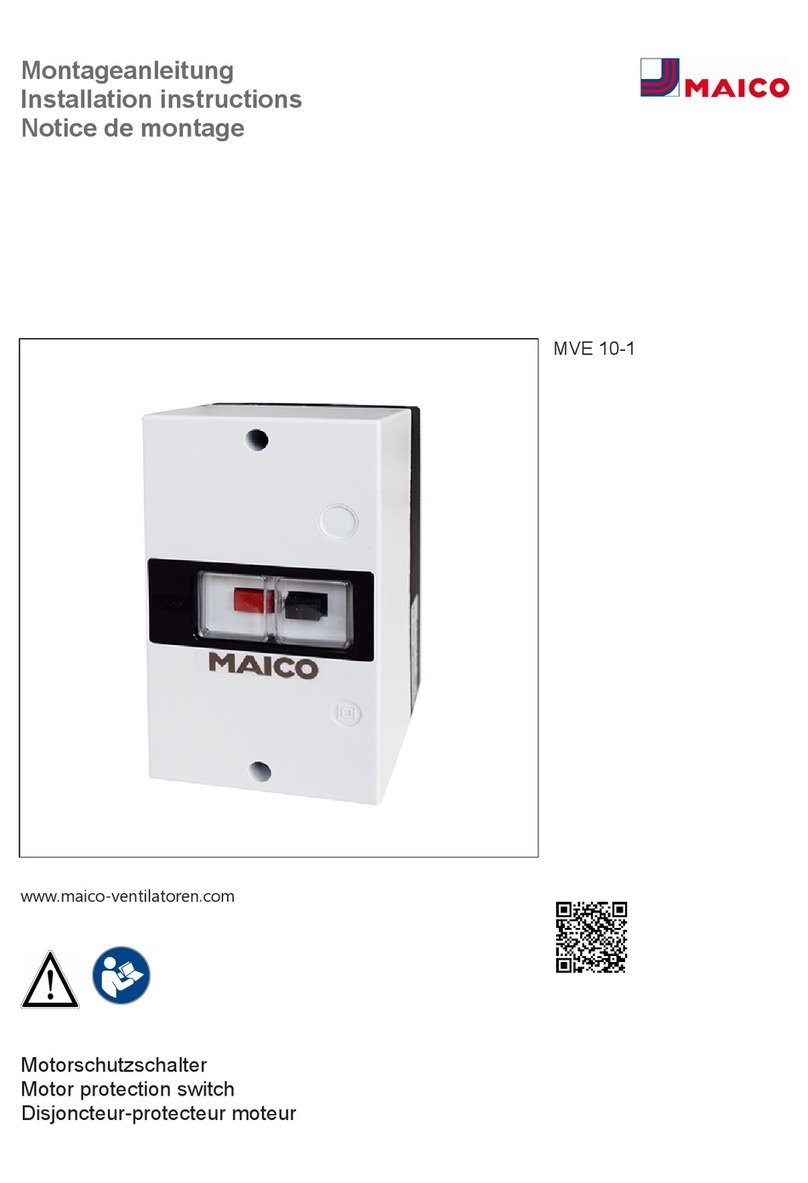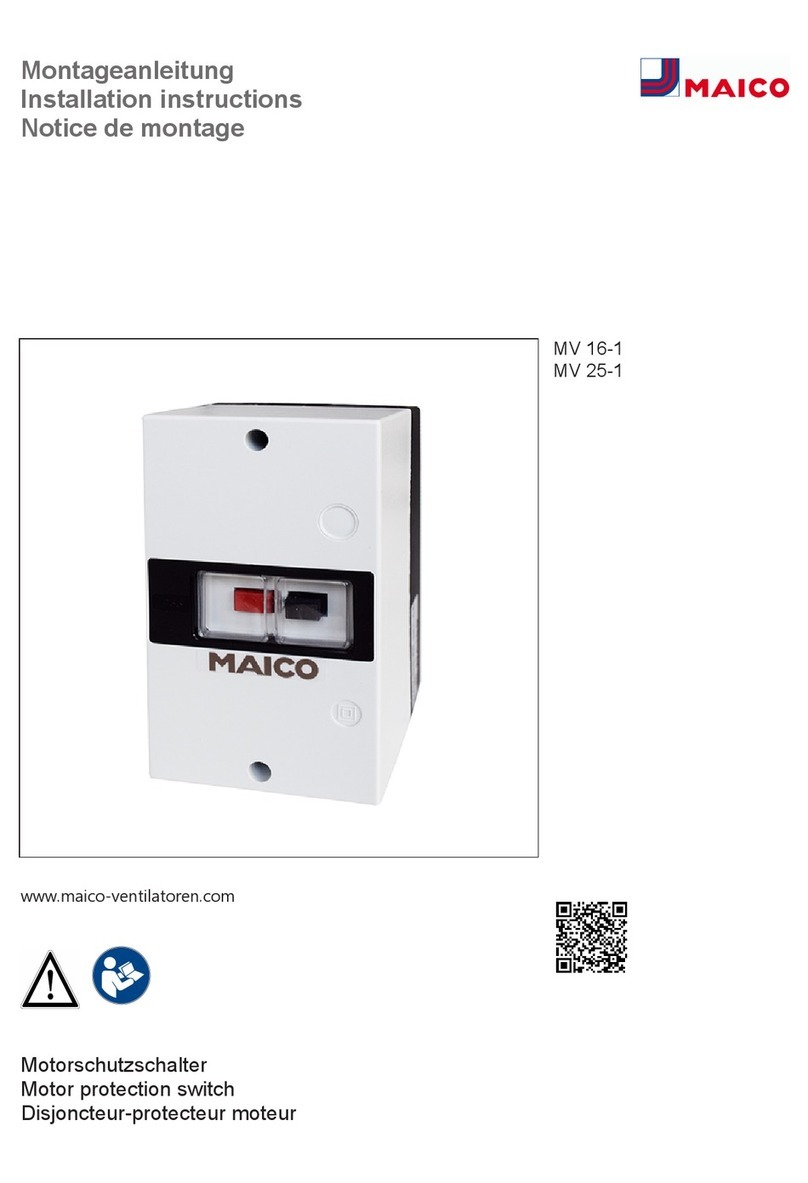
Funkübertragung
Die Funkübertragung erfolgt auf einem nicht
exklusiven Übertragungsweg. Störungen kön-
nen deshalb nicht ausgeschlossen werden.
Nicht geeignet ist die Funkübertragung zum
Schalten von Sicherheitsanwendung, z. B.
für Not-Aus- oder Notrufeinrichtungen.
Die Sendereichweite des Funkschalters beträgt
max. 100 m im Freifeld. Sie ist jedoch abhängig
von den baulichen Gegebenheiten des Objek-
tes und fällt in der Regel geringer aus:
Trockenes Material Durchdringung
Holz, Gips, Gipskartonplatten ca. 90%
Backsteine, Press-Spanplatten ca. 70%
Armierter Beton ca. 30%
Metall, Metallgitter, Alu-Kaschierung ca. 10%
Montage
Der Funkschalter wird im Aufputzgehäuse [1]
oder in eine bauseitig bereitzustellende Unter-
putzdose eingebaut.
1. Aufputzgehäuse [1] mit geignetem Befes-
tigungmaterial an der Wand befestigen. Ggf.
im Gehäuse gewünschte Solldurchbrüche
durchbohren. Alternativ kann das Gehäuse
mit dem beigefügten Klebeeinsatz an einer
Scheibe befestigt werden.
2. Sender [2] im Aufputz- bzw. Unterputz-
gehäuse mit 2 Schrauben befestigen. Unbe-
dingt auf die Kennzeichnung „TOP“ achten,
diese muss oben stehen.
3. Antenne [2.3] im Aufputzgehäuse [1] ober-
halb der Stege verlegen. Unterputz: Um max.
Sendeleistung beim Einbau in UP-Dose zu
erhalten, die Antenne wenn möglich vom
Sender entfernt, frei gestreckt und mit Ab-
stand zu großflächigen Metallteilen (Tür-
rahmen etc.) verlegen. Auf keinen Fall die
Antenne knicken, abisolieren, kürzen
oder verlängern.
4. Am DIP-Schalter [2.2] den Schalter 1 „Batt.“
auf ON stellen.
5. DIP-Schalter-Positionen prüfen. Einstellung
für alle 4 DIP-Schalter = rechts.
6. Schaltereinsatz [4] in Schutzblende [3] ein-
legen und gesamte Einheit vorsichtig auf
Sender [2] aufstecken, bis die Federn ein-
rasten. Darauf achten, dass die 10-polige
Steckerleiste und die beiden Federn nicht
beschädigt werden.
Funkempfänger einlernen
Hierfür muss der Funkempfänger installiert
und der Ventilator angeschlossen sein,
siehe auch Funkempfänger-Anleitung.
Der Funkempfänger wird auf den Sendekanal
(Sendefrequenz) des Funksenders abgestimmt,
in dem er ein Funktelegramm des Senders ein-
lernt.
Einem Sendekanal lassen sich unbegrenzt viele
Funkempfänger zuordnen, die Zuordnung er-
folgt im jeweiligen Empfänger.
Zum Einlernen den Höchstabstand zwischen
Sender und Empfänger von max. 5 m sowie den
Mindestabstand von 1 m beachten.
Ggf. mit der ausgebauten Sender/Schalterein-
satz-Einheit direkt an den Empfänger gehen. Die
Komponenten nach dem Einlernen wieder mon-
tieren.
1. Funkempfänger in den Lernmodus schalten.
Dazu am Empfänger die Taste ON/OFF ca.
5 Sek. drücken, bis die rote LED „Prog.“
blinkt und der bereits eingeschaltete Ventila-
tor ausschaltet.
2. Kanal innerhalb von ca. 1 Minute einlernen.
Am Funksender XS 1 mit Taste [4.1] ein
Funktelegramm auslösen.
3. Am Funkempfänger leuchtet die rote LED
„Prog.“ ständig, das Funktelegramm ist
empfangen. Eine schnell blinkende LED zeigt
einen Löschvorgang an => Einlernvorgang
wiederholen.
4. Am Funkempfänger zweimal die Taste ON/
OFF drücken.
5. Funktion mit Taste [4.1] und Taste [4.2]
prüfen. Fertig !
Wird ein bereits eingelernter Sendekanal noch-
mals eingelernt, wird diese Kanalzuordnung im
Emfänger gelöscht. Die rote LED „Prog.“ blinkt
schnell. Kanalzuordnungen müssen einzeln ge-
löscht werden.












